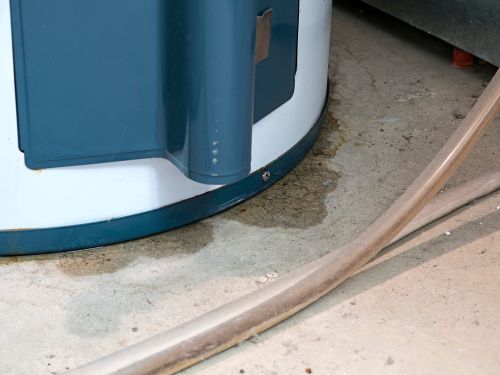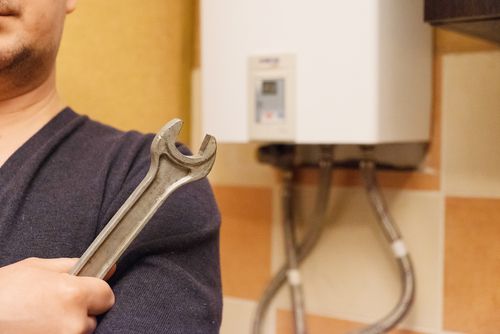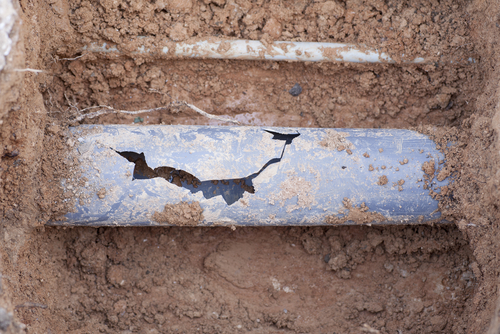How to Find a Water Leak inside a Wall
It’s always smart to be vigilant when it comes to safeguarding your home. Whether you’re protecting your home against pests, fires, or a possible water leak, keeping a close eye on things is always key.
Water leaks, in particular, can be hard to deal with because they can be difficult to detect. You may not even be aware that something is wrong until lasting damage is already in your home. By that point, you may already have hefty repair or renovation bills in your future.
Don’t allow water damage to remain undetected for an extended period of time. Act right away so that you can protect your home more effectively.
Learn more about the causes, effects, and signs of water leakage in your walls by reading on. You can also pick up some valuable tips for detecting water leaks by continuing with this article.
The Causes of Water Leakage in Your Walls
Leaks don’t spring up in your walls spontaneously. There are legitimate reasons why those leaks emerged.
You can address some of the causes behind water leaks beforehand to prevent them from becoming a real problem, while others may remain undetected until they start causing issues.
Natural Wear and Tear
Houses age and the same goes for the components inside them. That means that your plumbing system also gradually weakens as the months and years go by.
It’s hard to do anything about that. You can invest in better plumbing materials while construction is taking place or have your pipes regularly inspected, but time will still eventually catch up to them.
Hopefully, though, you won’t need to deal with your pipes leaking due to wear and tear anytime in the near future.
Too Much Frozen Water in Your Pipes
There’s a reason home repair experts recommend checking your heating unit and insulating your pipes ahead of the winter season. The freezing temperatures that become the norm during that time of the year can wreak havoc on your plumbing system, with the pipes becoming particularly vulnerable.
Water that flows into your pipes during the winter is likely to freeze. Once that happens, the ice may prove too much to hold for your pipes. That, in turn, could cause cracks to form.
Clogging in the Pipes
Over the course of many months, all kinds of debris may fall into your pipes. Smaller leaves and twigs are the most common culprits.
Most of the time, those small items will pass through your pipes with no issue. In some cases, though, they may get stuck in your pipes causing clogs to form.
A blockage can lead to the water accumulating in one spot and increased pressure on the pipes. Like with excess ice, high water pressure can also cause cracks.
Water Pressure Is Set Too High
Clogging is not the only reason your water pressure may increase. While power-washing a part of your home, you may have turned up the water pressure. You may have also forgotten to turn it back to normal once you finish.
Consistently subjecting your pipes to high water pressure will quickly lead to them sustaining lasting damage. Make sure to check on your water pressure regularly to be safe.
Repairs Were Not Carried Out Properly
One more reason your pipes are leaking could simply be because they were not handled properly before. If you entrusted your plumbing repairs to inexperienced workers, leaks are more likely to show up in the future.
Whenever the need for repairs pops up, it’s always wise to call on the experienced professionals for help. Along with addressing the current plumbing issue, they can also prevent other ones from emerging.

The Effects of Water Leaking Inside Your Walls
You probably already know that water damage is bad news for your walls, but are you aware of how damaging it can be? Water damage can do more than make your home uncomfortable. It can also have lasting effects that impact your bank account.
Your Home’s Structural Integrity May Be Compromised
Arguably the most concerning side effect of water leakage is the damage that it can do the structural integrity of your home. Beyond changing the appearance of your walls, prolonged exposure to moisture can also affect the raw materials used to construct your home.
Wooden panels used in your walls may soon rot due to the water and metal components present, and they may succumb to corrosion. The deterioration of those materials could lead to bigger problems emerging in the future.
You may need to replace sections of your home’s walls. If the deterioration is particularly bad, complete renovation may be required.
Mold and Mildew May Start to Grow
Certain fungi thrive in moist locations, with mold and mildew being among the most common examples. The problem with having mold and mildew growing in your walls is that they can be damaging in more ways than one.
Their continued growth could damage certain portions of your wall. On top of that, they can cause health issues too.
Pests May Start to Invade Your Home
Mold and mildew are not the only intruders you need to worry about if your pipes are leaking. Pests love moist environments, and they could flock to your home.
Cockroaches, mosquitoes, and termites are only some examples of pests that are quite fond of moist environments. By not checking for potential leaks, you could effectively turn your home into an environment that is more accommodating to pests.
You May Need to Pay Bigger Utility Bills
Water leakage can also lead to you paying higher utility bills.
Apart from paying for water that is only going to waste, you may also pay higher electric or gas bills because your home’s temperature regulation is off. Over time, those bills can pile up and make a big dent in your bank account.
Your Home’s Value May Suffer
Let’s say that after inspecting the damage the water leak has done to your home, you figure that it’s best to cut your losses and sell your home now, instead of paying for costly repairs.
The problem there is you may have to sell at a loss. Even in a best-case scenario, you may not make much of a profit from selling your home if it has sustained significant water damage.
The Signs of Water Leakage inside Your Walls
Now that you know more about how damaging water leakage can be, it’s time for you to act and protect your home more effectively. You can start by looking out for the signs of water leakage.
Listed below are some of the most prominent signs.
Your Walls Look Different
The easiest way to tell if you have a water leak inside your walls is to look at them. The appearance of the wall will change if it’s affected by a leak.
Some things to look for include discoloration. Paint or wallpaper applied to a wall may start to warp and change due to the water. Bubbles and tears may also start to form on the surface on the wall if there’s a leak present.
Puddles of Water Are Forming near Your Walls
Aside from looking at your walls, you can also detect a water leak by shifting your focus downward. Puddles of water tend to form near walls with leaks.
You may need to pull up the carpeting to get a better look at where the puddles are forming.
You Can Hear Dripping Sounds Inside Your Home
While enjoying a quiet afternoon at home, you may find yourself disturbed by dripping sounds. After checking the faucets and the shower, you may come up with nothing and assume that you were imagining things.
The reason why you were unable to spot anything could be that you weren’t looking in the right places. Leaks could be why you’re hearing those dripping sounds. The water may already be squeezing out of your pipes and dripping through your walls.
Unusual Odors
You already know that mold and mildew may start to grow in your home due to water leakage. Mold and mildew can make its presence felt by changing the appearance of your walls and releasing a distinct odor.
The odor smells musty, and it’s hard to miss.
Unusually High Utility Bills
As noted earlier, your utility bills may become more expensive if you have a leak because water is being wasted constantly and requires more energy to make your home comfortable.
If you notice your bills spike, you may need to check for leaks.

How to Detect Water Leaks in Your Home
Looking for the signs of a water leak is one thing. Pinpointing the reason behind a leak is a different matter altogether.
Depending on what is causing the leak, finding it can prove to be a challenge. The following tips can make things easier for you, however.
Perform a Test to Determine the Nature of the Leak
Leaks can sometimes be by entryways leading into your home such as overloaded gutters and downspouts, or there could be broken pipes buried in the ground. It’s also possible that the leak is your indoor plumbing.
To help you figure things out, you can perform a relatively simple test.
Start by turning off the water sources inside your home. Next, look at your water meter and write down the number shown.
After taking note of the number, wait for three hours, go back to your water meter and check if the number still matches what you wrote down. If the number has changed, you may have a problem with your indoor plumbing system.
Make Use of Gadgets
Finding out the nature of the leak doesn’t mean that you will pinpoint its origin right away. If you want to get a better idea of where the water is coming from, you may need to enlist the help of some gadgets.
Thermal cameras and moisture meters are particularly helpful.
Remove a Portion of Your Wall
Probably the most direct way to look for a leak in your walls involves removing a portion of it. Take a portion of the drywall out and take a look behind it to see if there’s a leak.
Using this method of leak detection does come with some risks, though.
Even if you’ve noticed that a particular section of your wall is discolored, that doesn’t necessarily mean that the water leak is directly behind it. Water may be trickling down to that spot from a different location. Plus, going with this method also means intentionally damaging your walls.
Only turn to this method of detection if the water leak has gotten worse.
How to Repair Water Leaks
More often than not, addressing a water leak will take a good amount of work. Sure, you can try and flush your pipes or remove foreign objects lodged in them manually, but those are preventative measures.
Using caulking and sealants will allow you to patch up the cracks, but that may not be good enough if the pipes are too weak.
The reality is that repairing broken pipes is no easy feat. Basic home repair experience may not be enough if you’re trying to fix or replace broken pipes.
In that scenario, the best thing you can do is to contact the professionals and ask them to take on the work for you.
Some homeowners are understandably hesitant to call on others to handle repairs, but their labor is more than worth it. The relatively small payment you make now can lead to huge savings in the future.
Folks in need of urgent home repair can get in touch with Best San Diego Leak Detection right now to have their problems expertly addressed.
April 28, 2020 Categories:











